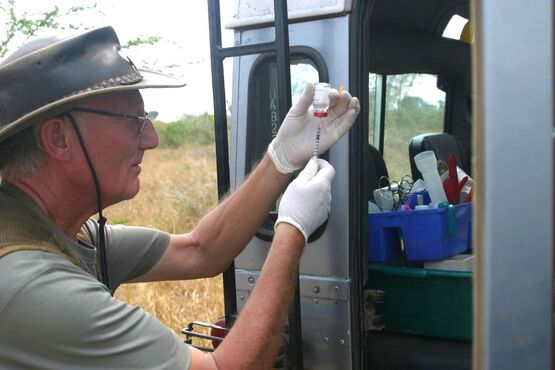
In order to better protect species like lions, hyenas, and leopards, it is imperative to understand their behavioral ecology, their population dynamics, their movements, and how their unique niches impact the greater community ecology of Queen Elizabeth National Park. This is part of the science involved in conservation biology, wildlife management, and ecology.
In addition to funds going toward human-carnivore conflict mitigation such as livestock enclosures, lights to deter predators from venturing too close to human settlements, and park patrols, the Uganda Carnivore Program dedicates a great amount of time to scientific research. This not only includes learning about the behavior of Queen Elizabeth National Park’s resident carnivores, but also involves surveys, investigating and keeping track of human-carnivore conflict incidents, additional data collection, and performing autopsies and studying biological samples from wildlife that have died either from natural causes or conflict.

Through continual monitoring, inventorying, cataloging, and other data collection and analysis, we can discover trends that allow us to make informed recommendations to the Uganda Wildlife Authority. In short, good science can inform good conservation initiatives.
It is only through continued learning that we can help forge a better future for the people and wildlife of this most wonderful region of East Africa!
